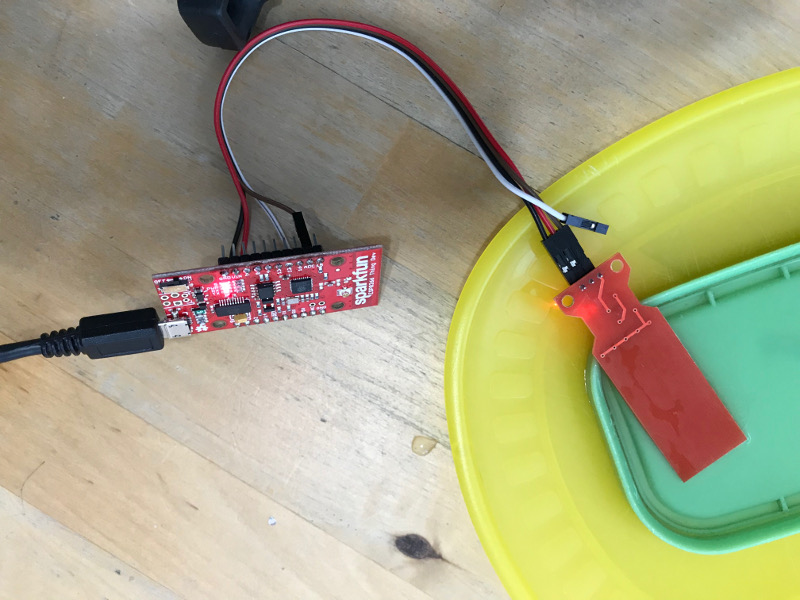Finally a reason and time to play with an esp8266 wifi capable microcontroller
Ever since I read about the ESP8266 in Make magazine in 2015, I’ve been wanting to build something with it. I picked up a Sparkfun ESP8266 Thing Dev board at Creatron, probably a year ago, and let it gather dust.
Enter 35 degree weather. I have a window air conditioner, that I install in a metal sleeve built into our wall. For some reason, the sleeve is sloped such that water flows INSIDE. When the A/C runs on humid days, the water it collects from dehumidifying can leak inside, creating an unpredictable annoying mess that has to be cleaned up.
I could pickup a commercial leak sensor, but that’s not fun, the mobile app is probably not very good, it probably sends more information than needed to its cloud service, will never receive updates, and it seems like we’re always reading about IoT device vulnerabilities.
So, I bought a water sensor ($2.20!) in June, connected it to the dev board, and started to write a client in the Arduino environment for the ESP8266, and the server in Node.js. Then summer happened. Today, it’s August, its only 24 degrees outside, the A/C is off, and I’m done! The client reads the sensor every 10 seconds, and calls the server with a standard web service call, which will check the sensor reading, and send an alert by email if a water leak is detected.
The code is simple, but I had challenges getting the ESP8266 to HTTP POST a JSON payload. It seemed every example I found used different libraries or versions than the ones I had installed. I eventually got it working.
In the end, we didn’t have any leaks this summer in any case, and I don’t expect to make use of this project. If you’re interested in checking it out, you can download the code here: watersensor.zip
